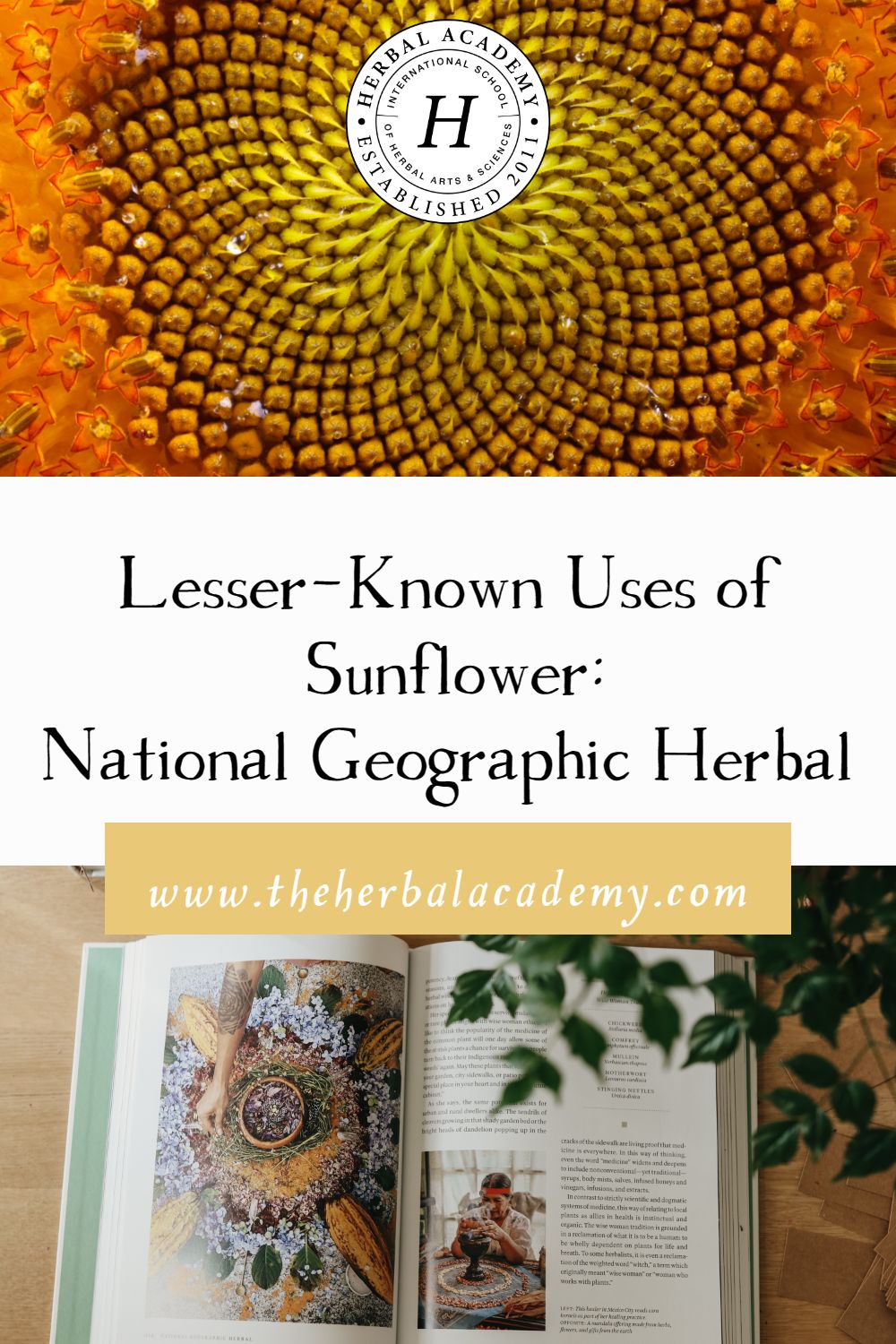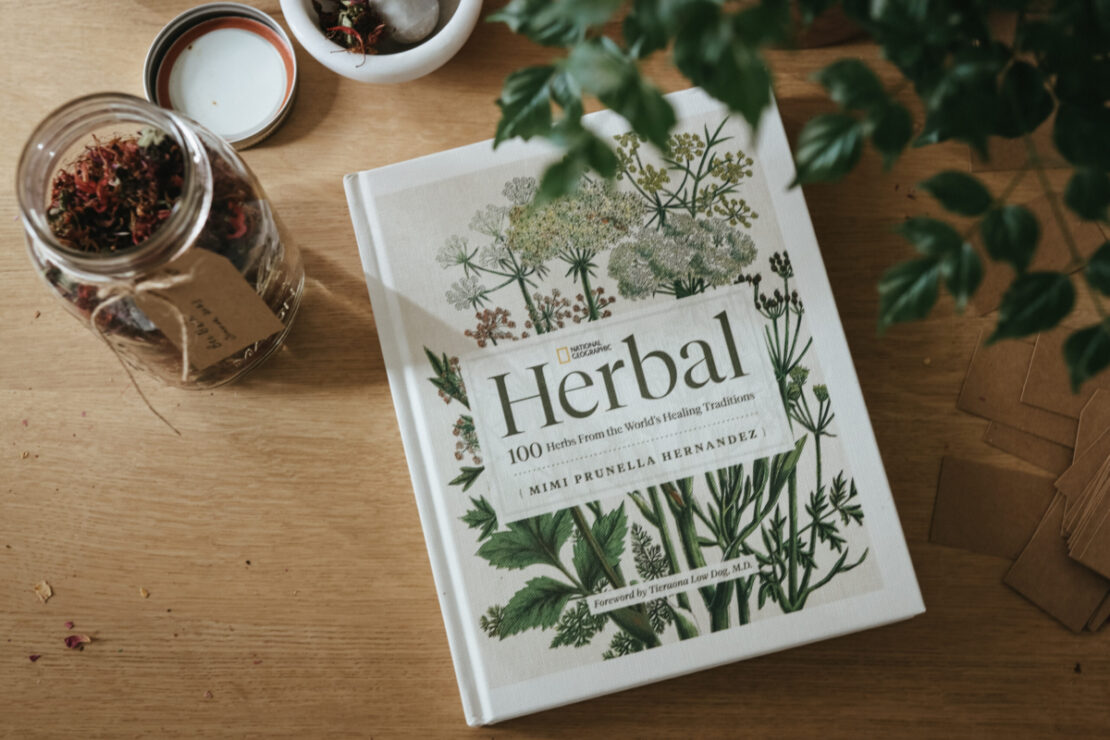
Lesser-Known Uses of Sunflower: National Geographic Herbal
In National Geographic Herbal, herbalist and author Mimi Prunella Hernandez, RH(AHG), shares her passion for discovering both global traditions and local wisdom surrounding various herbs and spices and is the perfect guide through a worldwide spectrum of perspectives in herbalism. Exploring the benefits of common weeds like dandelion and red clover, as well as little-appreciated herbs like kudzu and ground ivy, her book highlights 100 different plants around the planet. The excerpt below introduces the curanderismo tradition of Mimi’s heritage and shares some lesser-known benefits of sunflower.
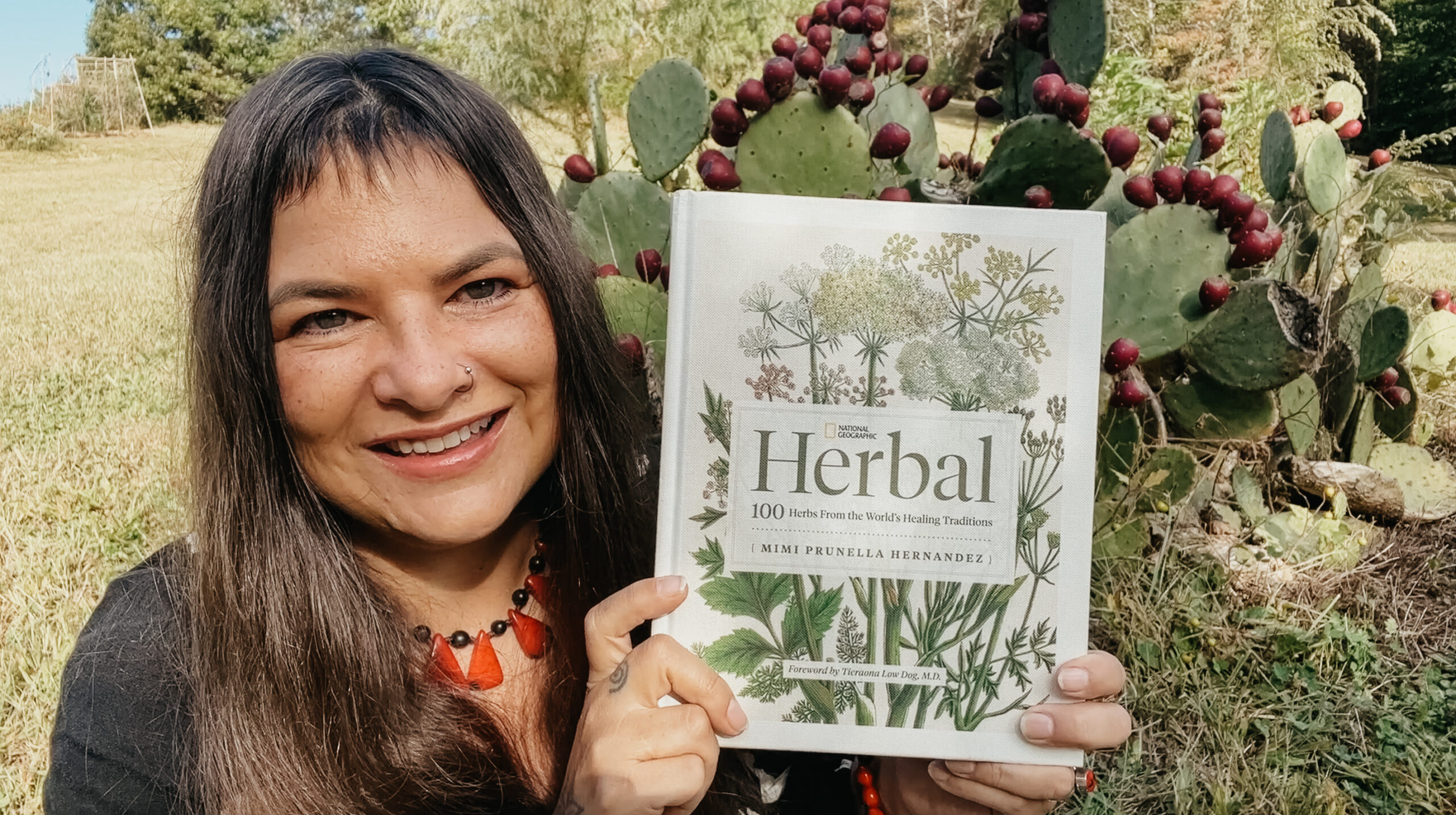
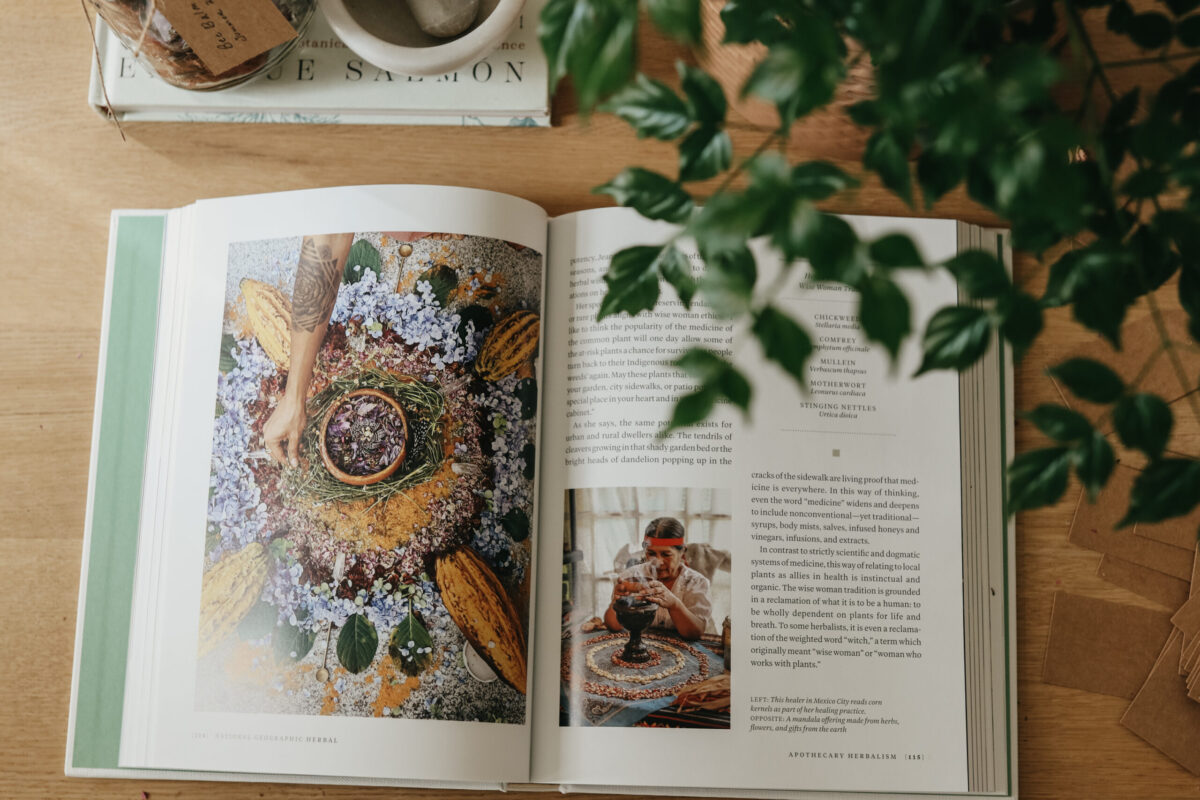
The following is excerpted from National Geographic Herbal by Mimi Prunella Hernandez. Copyright © 2023 National Geographic Partners, LLC. Reprinted in arrangement with National Geographic Partners, LLC.
CURANDERISMO: A LATIN AMERICAN HEALING LINEAGE
Curanderismo is a living model of healing whose specific practices vary according to its regional origins. It includes elements of ancient Indigenous Mesoamerican wisdom enriched by the healing traditions of the African diaspora and infused with influential Catholic and Spanish customs.
The ancestral roots of curanderismo are best expressed in the ceremonial treatment of the psychospiritual as an essential component of physical health care. In this tradition, spiritual and supernatural effects on health are taken seriously and remedied with herbs, diet, prayer, and ritual. The shared traumatic history of Latin Americans has instilled a sense of resilience into their health culture, focusing on the powerful bond between the soul and body. A susto, or a traumatic fright, can result in soul loss and have grave effects on physical health, similar to PTSD.
Community Compassion
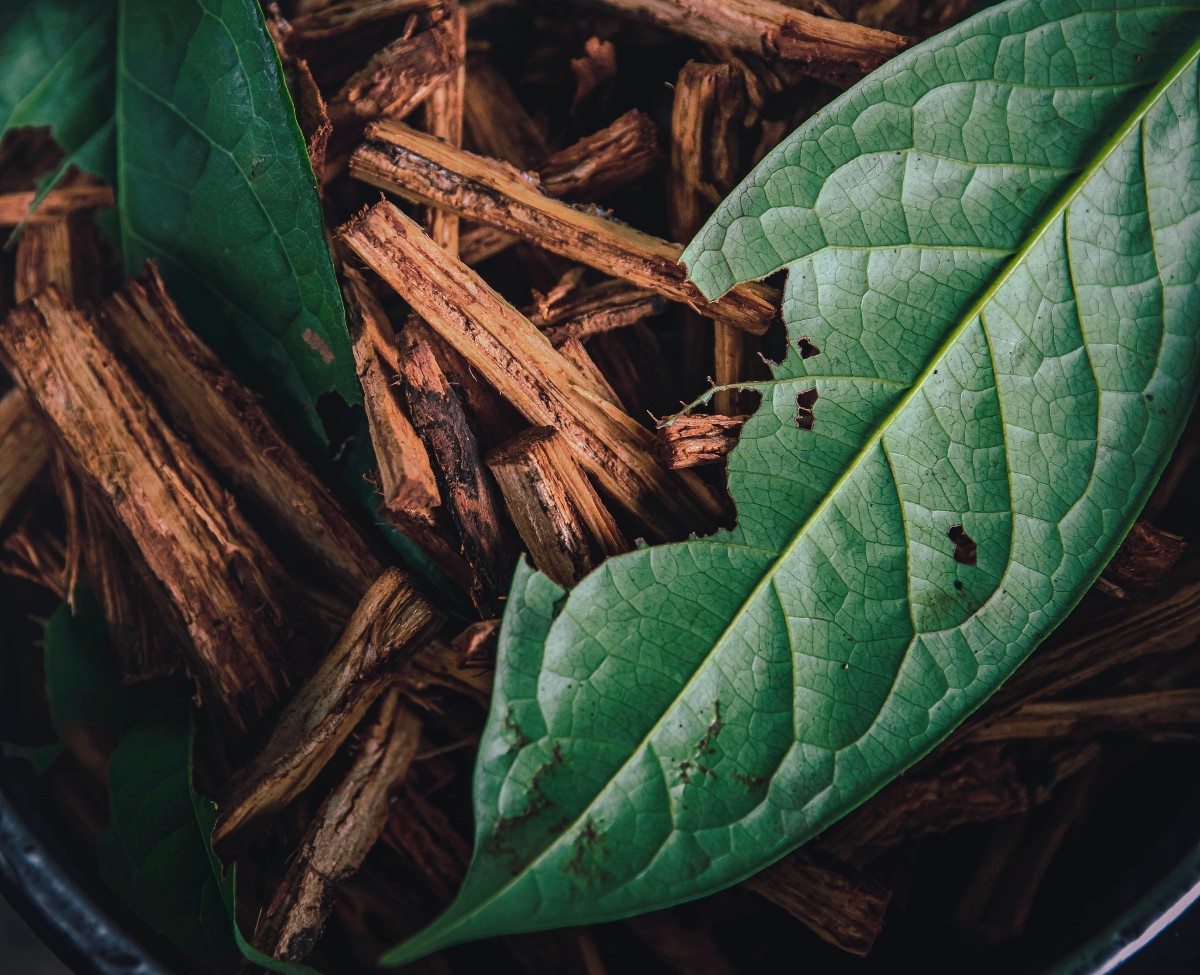
The curandero (or healer)—a term considered gender-neutral in this book—exercises compassion for those who are troubled with trauma, envy, or malice. The healer might prescribe a series of spiritual baths using roses or lemon balm to comfort the soul back into bond with the body. They might sweep the body with herbs like basil or lemongrass in a limpia, or a cleanse, to remove unhealthy bilis, or rage, that may bring illness.
In curanderismo, the sense of belonging in the community contributes tremendously to a person’s well-being. Resocialization with family and neighbors after illness is often a task facilitated by the curandero and necessitates community compassion. Health-oriented communities can also lay the groundwork toward embracing traditional medicine, which begins with unraveling the perspective that the only acceptable medical model is the one based on allopathic, or Western, standards of practice. Many Latin Americans today opt for allopathic care in certain circumstances and curandero care in others.
Today, curanderismo perseveres as an important facet of public mental and physical health care. This is especially true among marginalized communities affected by disparities in access to care and among people dedicated to preserving connections to the healing ways of their ancestors.
As Charles Garcia, a third-generation curandero and practicing herbalist, puts it, “When we feel the tides of modernity begin to strip us of our identity, curanderismo in all its various forms reminds me we can still heal with plants, ritual, and heart. Without this we are just lost children.”
SUNFLOWER
Genus and Species: Helianthus annuus
Family: Asteraceae
An Aztec shield flower to conquer fevers
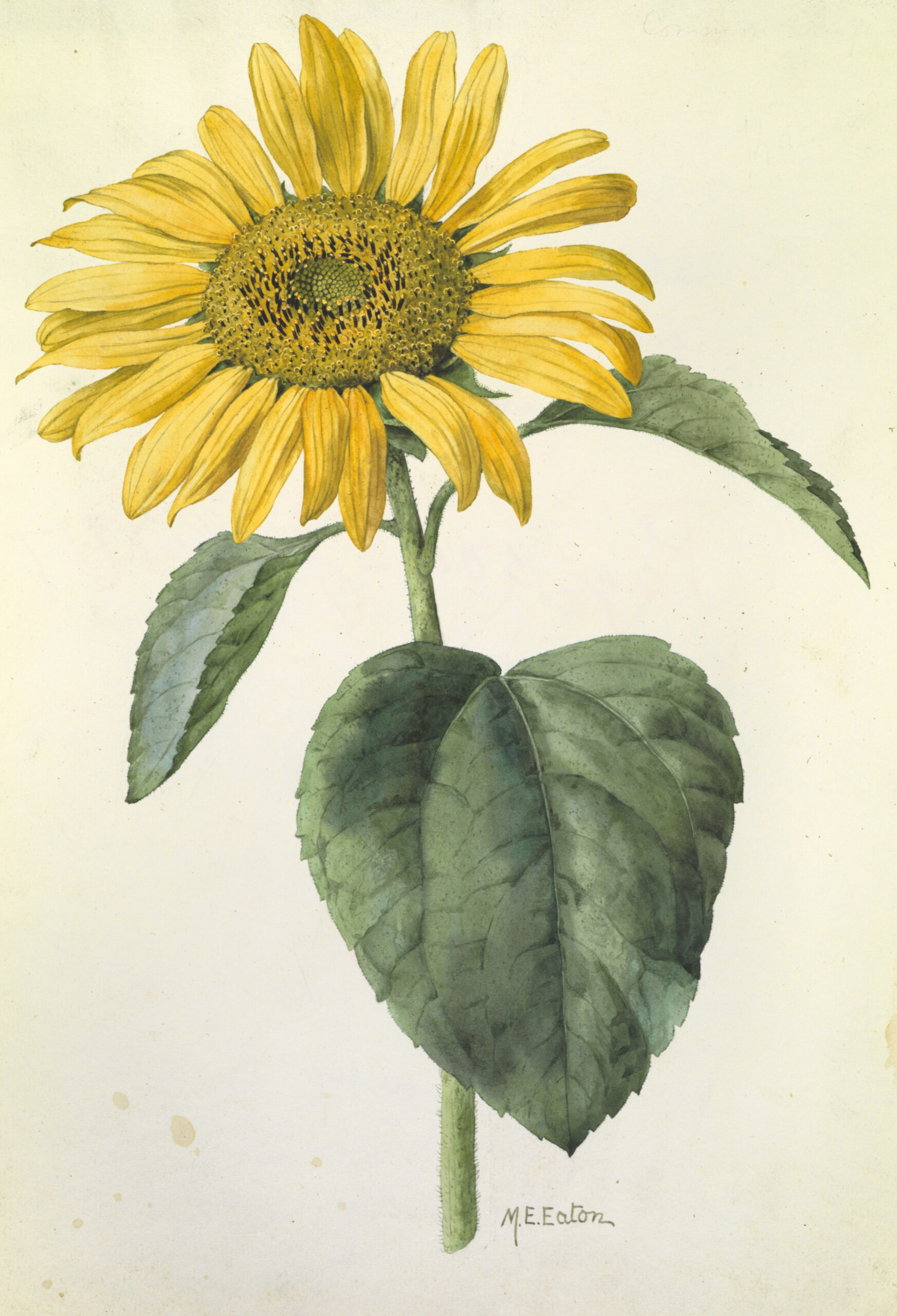
The Aztec language Nahuatl speaks of chimalxochitl, or “shield flower,” a reference to this large flower’s association with their warrior sun god. Ancient signs of cultivated sunflowers can be tracked back several thousand years to Mesoamerican lineage in regions known today as Mexico. Its Spanish name, girasol, or “turns with the sun,” reflects the heliotropic motion of the flowerhead’s gaze as it follows the sun east to west throughout the day.
Legend holds that conquistadores attempted to repress sunflowers, recognizing their associations with the sun deity and the empowerment they symbolized to the people who grew them. These efforts were futile: even the Spaniards eventually recognized the sunflower’s undeniably glorious ability to spread seeds across the globe. Beyond the sensational visual display of their ray-lined flower discs and the promising embrace of their heart-shaped leaves, sunflowers benefit the earth with deep taproots that aerate and remediate the soil. The blossom is packed with a multitude of tiny nectar-filled blooms, which attract bees and later become a plentiful source of oil-laden seeds for birds.
There are many ways to reap the healthy benefits of these garden stars. Few sunflower admirers know that these lofty plants are edible at every phase of their growth cycle. Easily grown sunflower sprouts, or microgreens, are high in protein and contain a complete set of amino acids and an impressive level of zinc and B vitamins. Nibblers can munch on sliced sunflower stalks like celery, or get creative with a sunflower root slaw.
Sunflower seed kernels are renowned for their nutrient density and satiating sustenance. Atole de teja is a recipe of Aztec origin for a ground sunflower seed porridge (see Mexican Champurrado, p. 59), a hearty breakfast served at traditional family gatherings. For sumptuous cuisine, the tight green sunflower buds are edible and can be prepared similarly to artichoke hearts.
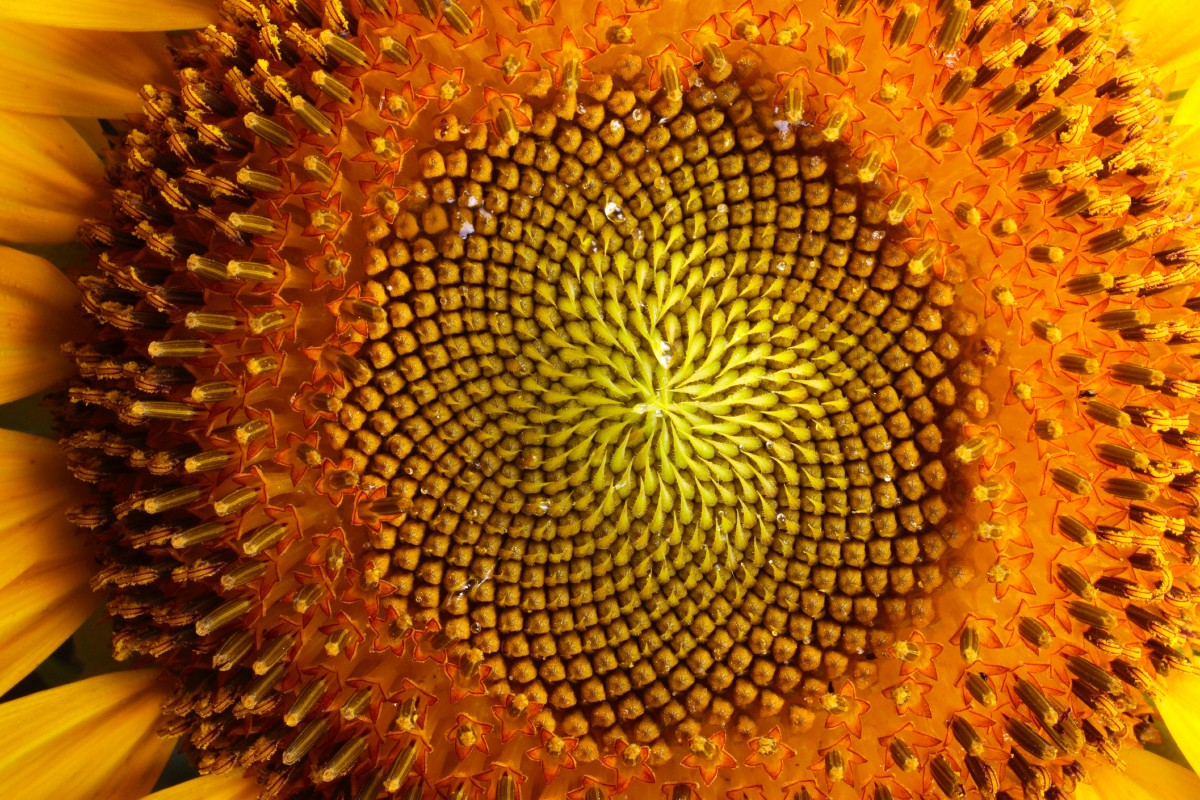
Therapeutic Uses
Coarsely textured sunflower leaves are medicinal, growing more bitter and potent as they age. For headaches, the large leaves can be blanched and draped over the forehead warm or cool, according to preference. The warm infusion is diaphoretic: It induces a sweat and brings down heat. A traditional curandero (healer) might treat a fever by rubbing a sunflower leaf liniment over the body with friction, then wrapping the person up in blankets to elicit sweating.
The leaf is also used as an expectorant. A leaf syrup or simple decoction can be taken to clear the phlegm of bronchitis, and dried leaves added to herbal smoke or tobacco leaves facilitate expectoration.
Sunflower leaves are astringent and can be used to dress and dry out a wound. A spit poultice is a quick remedy for bee stings, itchy insect bites, and scrapes. The leaves can be soaked in rum to make a liniment for achy, swollen joints and sprains. A similar remedy calls for sunflower greens and cayenne soaked in alcohol or vinegar to be used as an embrocation, a pain-relieving liquid like a liniment, to rub into sore muscles. The yellow rays surrounding the flower disk are rich in flavonoids, and an infusion of these petals can nourish healthy collagen. A flower infusion also makes a restorative gargle for bleeding gums or a sore throat.
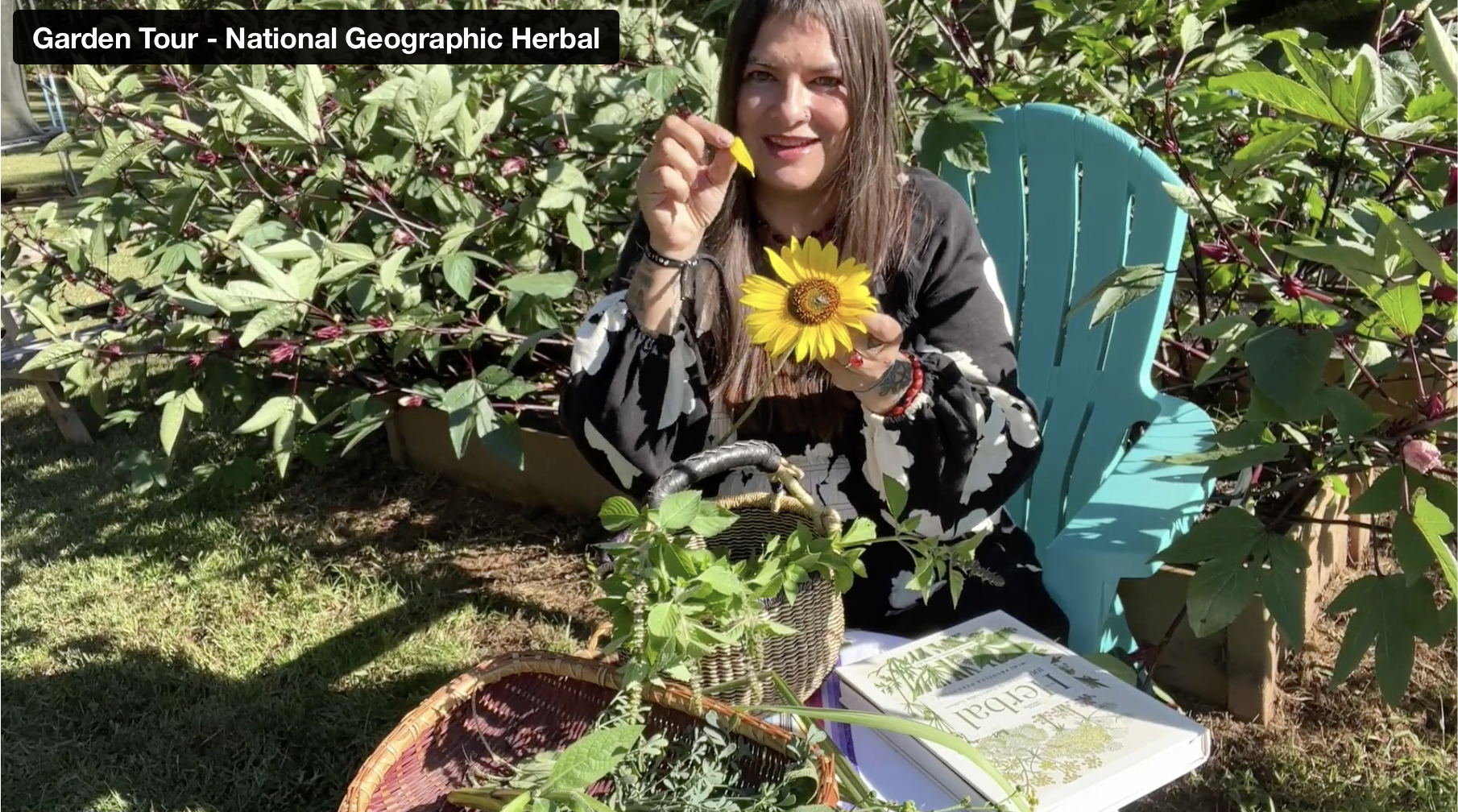
SEE THE VIDEO IN THE HERBARIUM!
Interested in learning more about some of Mimi’s beloved plant allies? Members of The Herbarium can access the full book excerpt (including more on the curanderismo tradition and a dragon’s blood croton monograph) and join Mimi in a video from the PonderLand, her United Plant Savers botanical sanctuary, to learn about rue, holy basil, hibiscus, and more! You’ll find the National Geographic Herbal excerpt & Garden Tour video in The Herbarium.
Interested but not yet a member of The Herbarium? Get access today with a 3 day trial for only $3!
The Herbarium is our ever-expanding, illuminating virtual collection of over 200 (and counting!) searchable monographs, unique intensive short courses on focused topics, and numerous articles, videos, ebooks, podcasts, and helpful downloadable resources. The Herbarium is crafted to help you learn and grow in your herbal journey!
Learn more and sign up for The Herbarium here.
Get a copy of Mimi’s book, National Geographic Herbal, via her website here or on Amazon.
For more inspiration from Mimi, see:
An Herbal Cheers with Mimi’s Mimosa Mimosa Recipe Featuring Mimosa Blossom
